Destroying Kerch Bridge is key to retaking Crimea, but can Ukraine manage that?
- By Stavros Atlamazoglou
Share This Article
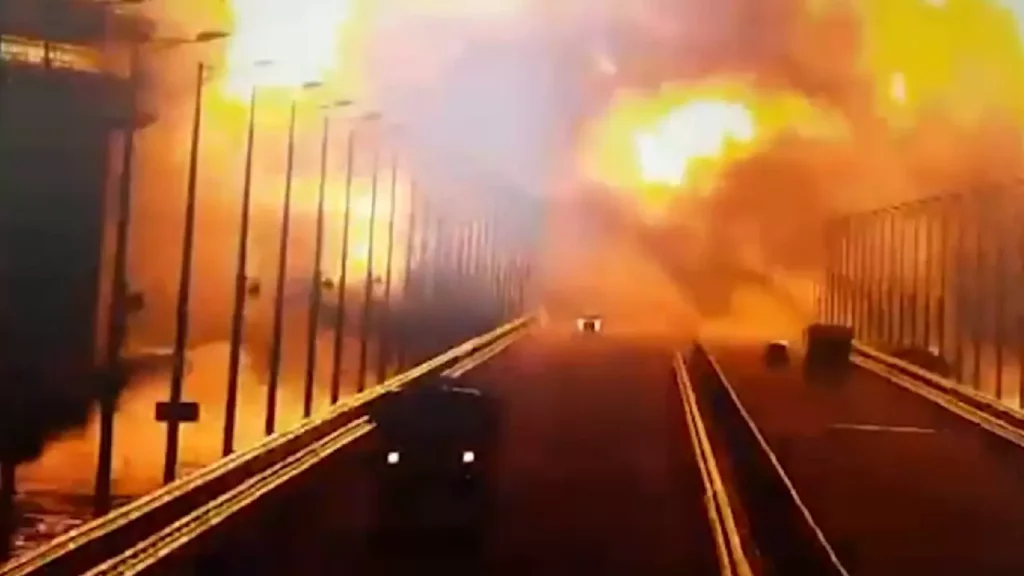
At some point before the war in Ukraine ends the Ukrainian forces will try to liberate the Crimean Peninsula. Ukrainian President Volodymyr Zelensky and his government have communicated that intention repeatedly.
Whether the Ukrainians succeed or not is another matter. But considering their stated intention, it is safe to assume that Kyiv will mount a large-scale offensive against the Russian forces on the peninsula. In such a case, the condition of the Kerch Bridge will be key.
A bridge to die for
The Kerch Bridge that connects Russia with the Russian-occupied Crimean Peninsula is one of the most important pieces of infrastructure in the war in Ukraine. It has both a road and a railway track.
Russia uses the road and railway bridges to push troops and supplies to the frontline in southern Ukraine. In addition, the bridge is the primary supply route for the significant Russian garrison of Crimea.
The Kerch Strait, where the bridge is located, is vital to logistically support Russian forces in southern Ukraine. Besides the bridge, the Russian Navy operates a number of military and civilian vessels to ferry troops and supplies from Russia to Crimea.
A personal project of Russian President Vladimir Putin, the Kerch Bridge has a broader importance for the Kremlin besides its key military value. As such, there are considerable forces guarding it.
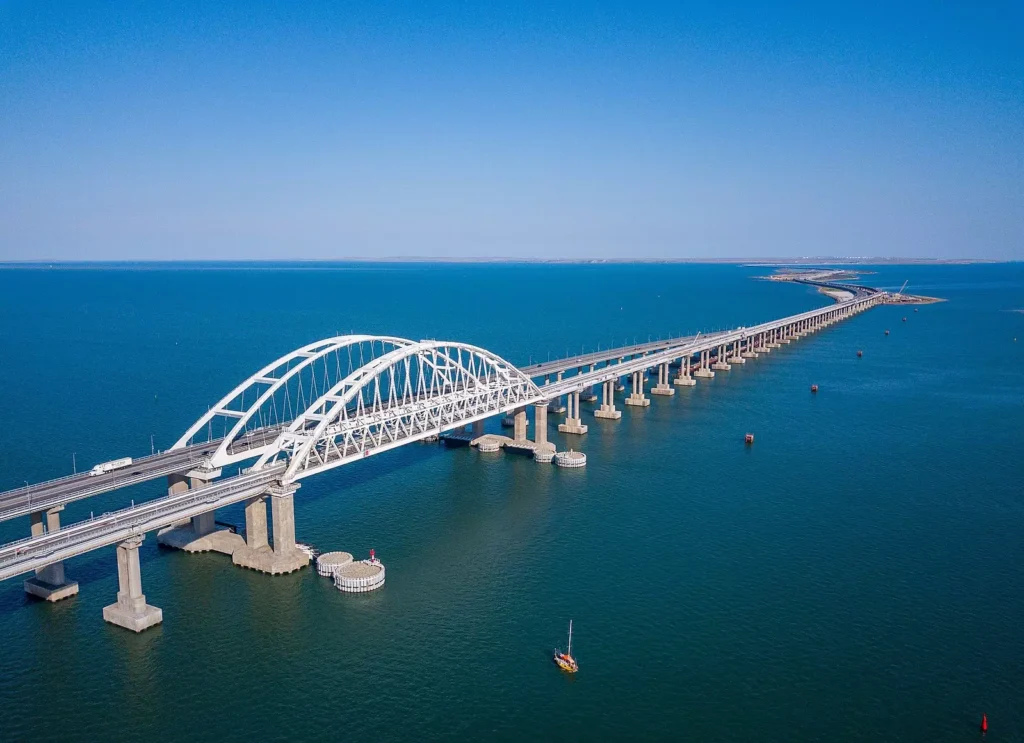
The Russian military is employing a number of different systems to protect the Kerch Bridge.
“Russia is employing a range of passive defences such as smoke generators and underwater barriers, alongside active defence measures such as air defence systems, to strengthen the survivability of water crossings and minimise damage from future attacks,” the British Military Intelligence assessed recently.
At the southern part of the Kerch Bridge, the Russian forces have erected a man-made barrier to fend off underwater suicide drones.
“As of 29 August 2023, imagery confirms Russia has created an underwater barrier of submerged ships and containment booms to deter against Uncrewed Surface Vehicle (USV) attacks against the Crimean Bridge,” the British Military Intelligence added.
Related: A realistic analysis of what F-16s can really do for Ukraine
Satellite imagery shows several vessels about 200 yards apart in the Strait, and the Russian Navy is known to operate electronic warfare systems in the area to counter radar and heat-seeking munitions.
In addition, Moscow has placed near the bridge TDA-3 smoke generators on trucks that can create dense smokescreens as countermeasures against aircraft, but especially against unmanned aerial systems. The Russian military has been operating the smokescreens in the area since May and has activated them at least once in August.
The Ukrainians have successfully attacked and damaged the Kerch Bridge twice in the war so far. Last year, around this time, the Ukrainian Military Intelligence (GUR) detonated a truck full of explosives on the road bridge, severely damaging the route as well as the adjacent railway bridge. Then, a few weeks ago, the Ukrainian forces attacked once more with an experimental underwater unmanned system and inflicted significant damage to the road bridge.
Even if the Ukrainian forces don’t manage to completely destroy or seriously damage the Kerch Bridge, they have been effective in diverting significant Russian resources to its defense.
Related: Russia is suffering from Ukraine’s cluster munitions, Russian colonel reveals
The fight for Crimea
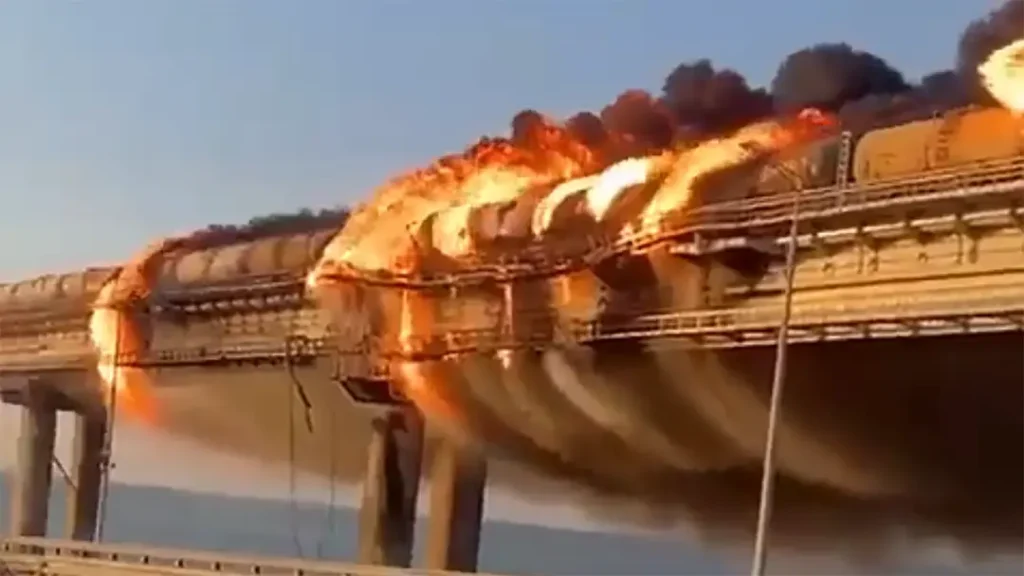
To liberate the Crimean Peninsula, the Ukrainian forces will have to be much more effective on the ground than they currently are.
To be sure, the extensive Russian fortifications along the contact line aren’t conducive to fast-paced offensive operations. But modern warfare isn’t just about blitzkrieg operations that capture swaths of territory and surround and destroy large enemy formations in a matter of days. A military force needs to have the necessary depth and stamina to take on a fortified foe.
The Russian forces in Crimea might not enjoy the same extensive fortifications as their comrades a few miles just to the north, but the geography of the peninsula favors the defender. Kyiv will have to find a way to counter the Russian advantage if it wants to free Crimea.
Read more from Sandboxx News
- Sandboxx’s Alex Hollings nominated for 5 Defence Media Awards
- The Soviet version of Operation Paperclip was way bigger (but less successful)
- What exactly is MARSOC, the Marines’ elite special operations component?
- The SOCP Fixed Blade’s great features and design make it a winner
- Army’s pre-boot camp will become permanent to improve the quality of recruits
Related Posts
Sandboxx News Merch
-

‘AirPower’ Golf Rope Hat
$31.00 Select options This product has multiple variants. The options may be chosen on the product page -

‘Kinetic Diplomacy’ Bumper Sticker (White)
$8.00 Add to cart -

‘Kinetic Diplomacy’ Bumper Sticker (Black)
$8.00 Add to cart
Stavros Atlamazoglou
Greek Army veteran (National service with 575th Marines Battalion and Army HQ). Johns Hopkins University. You will usually find him on the top of a mountain admiring the view and wondering how he got there.
Related to: Ukraine

The B-2 Spirit is aging but still packs a bunch
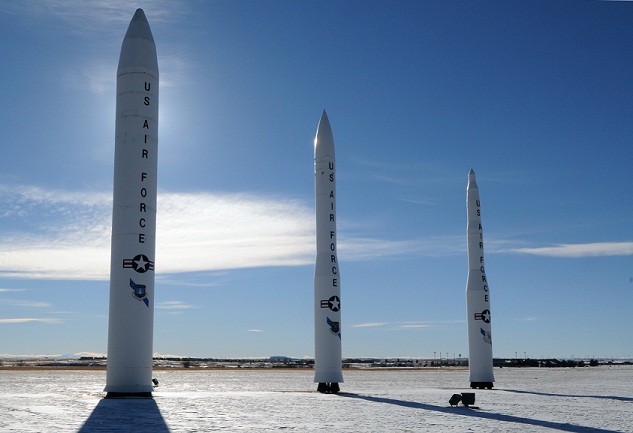
How large are the nuclear arsenals of Russia and China compared to those of the US and its allies?
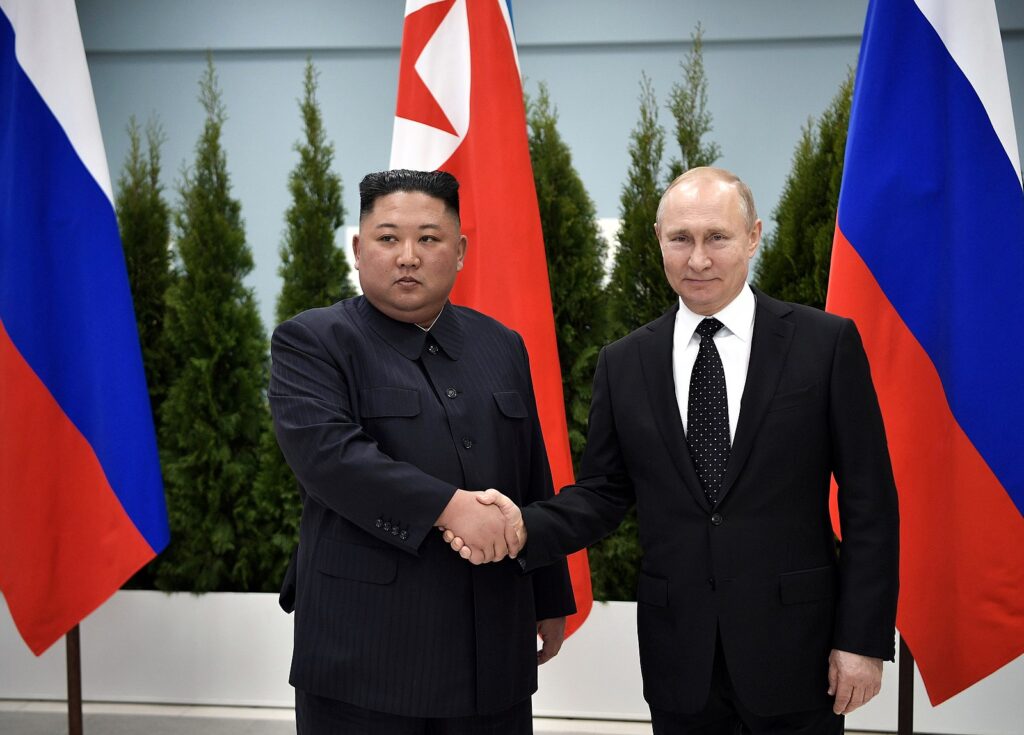
50,000 Russian and North Korean troops prepare to attack Ukrainian forces in Kursk
Sandboxx News
-

‘Sandboxx News’ Trucker Cap
$27.00 Select options This product has multiple variants. The options may be chosen on the product page -

‘AirPower’ Classic Hoodie
$46.00 – $48.00 Select options This product has multiple variants. The options may be chosen on the product page -

‘AirPower’ Golf Rope Hat
$31.00 Select options This product has multiple variants. The options may be chosen on the product page -

‘Sandboxx News’ Dad Hat
$27.00 Select options This product has multiple variants. The options may be chosen on the product page
